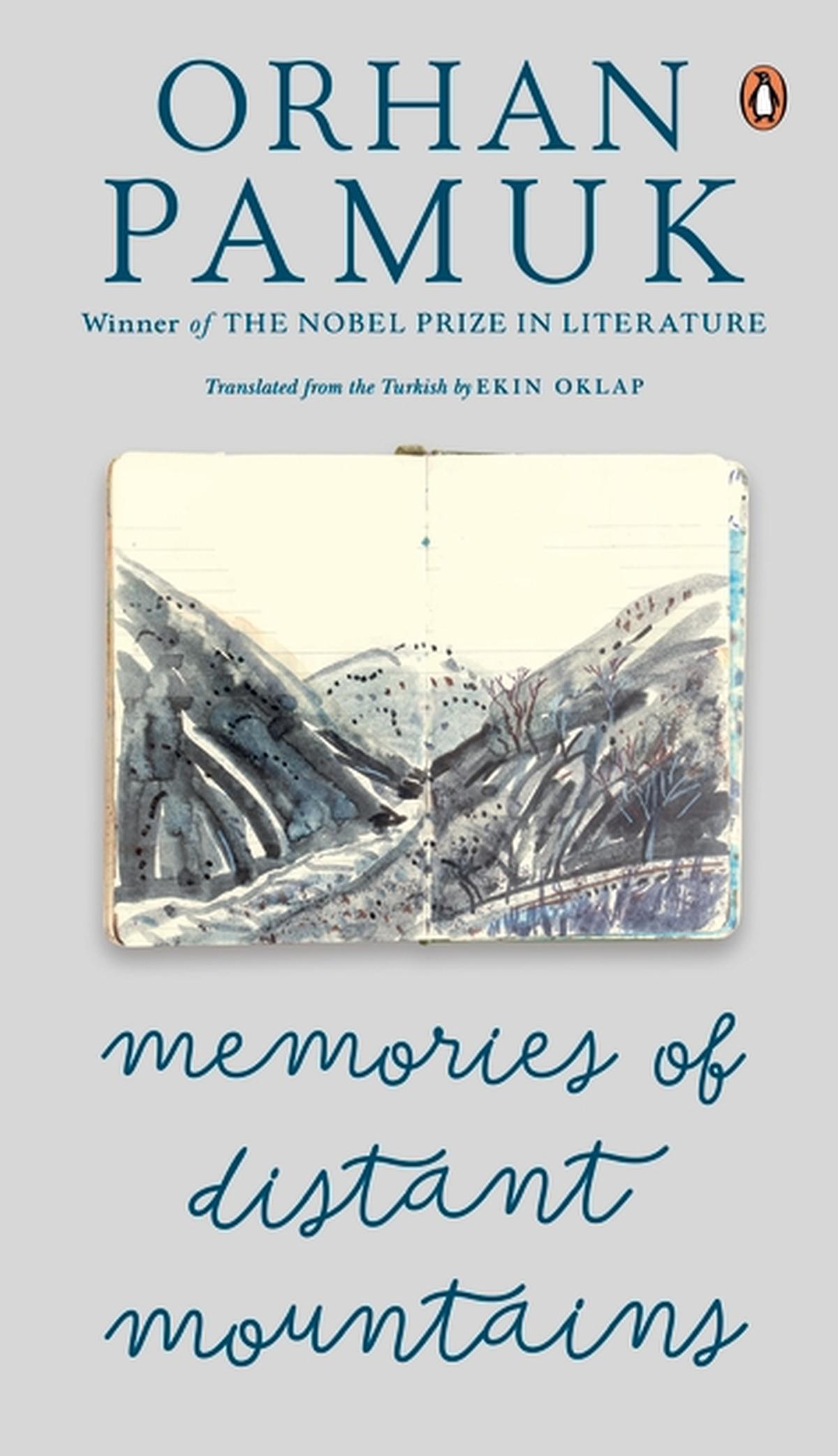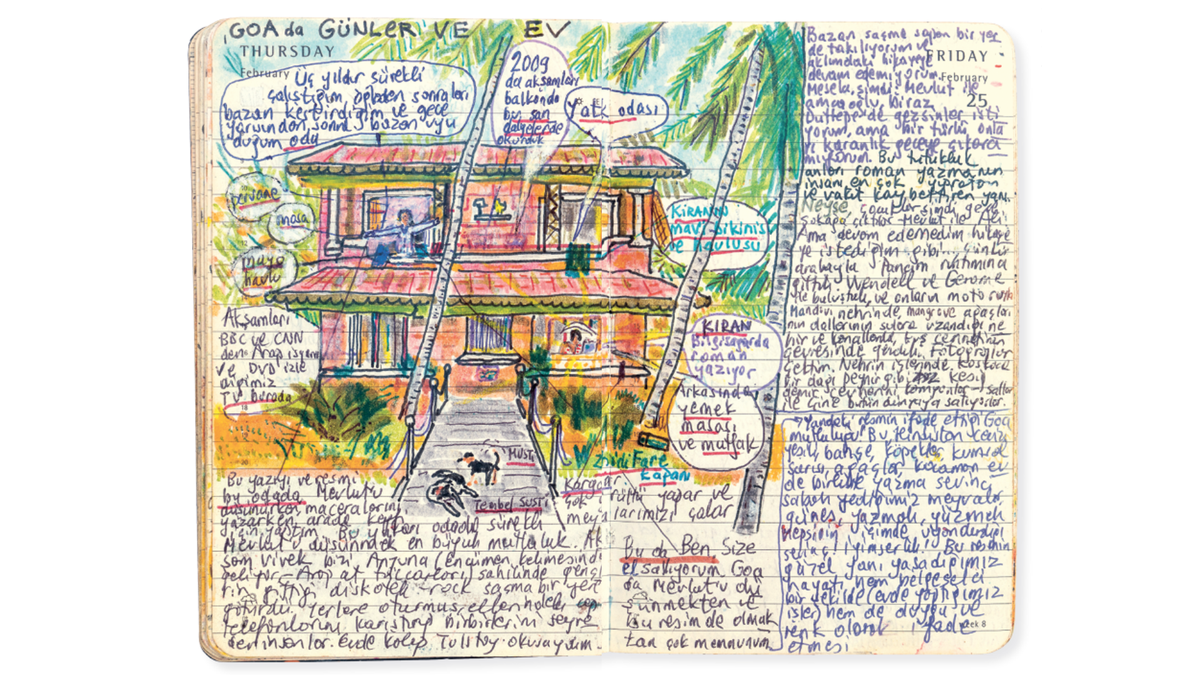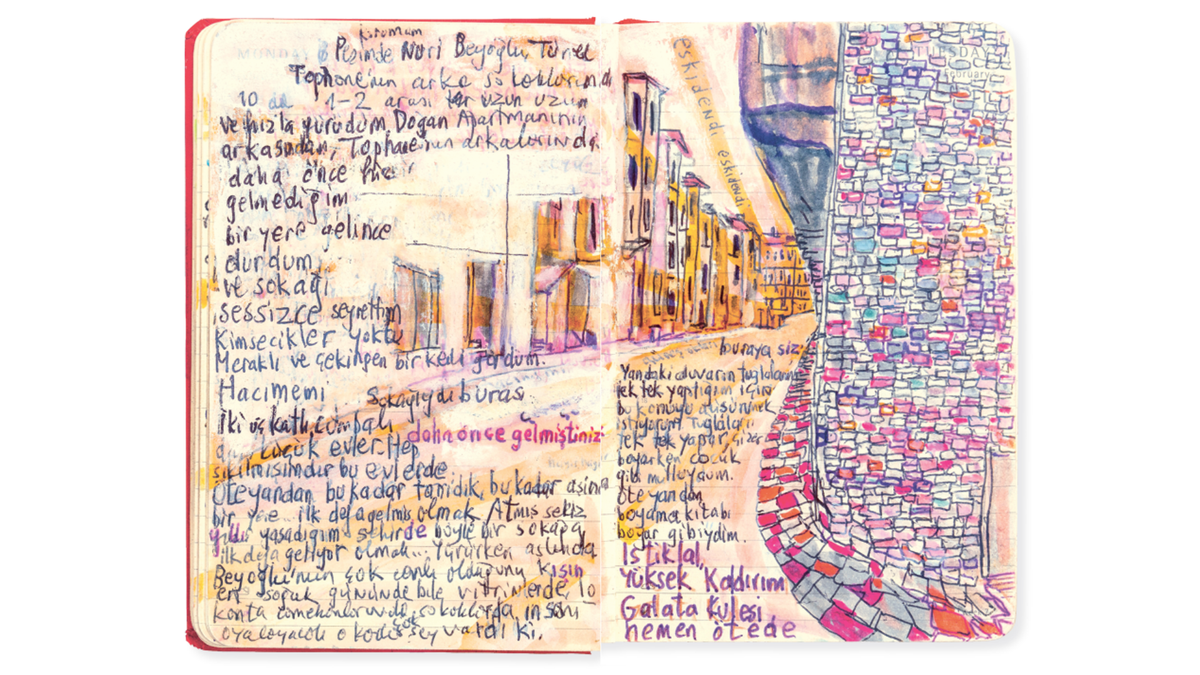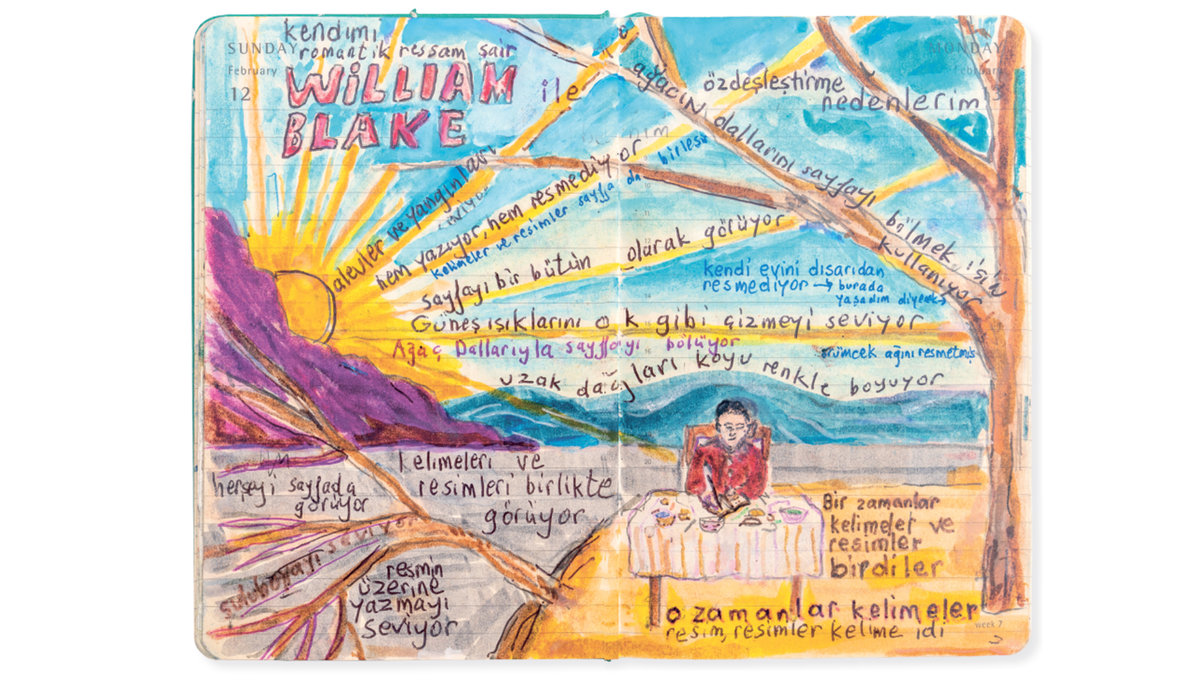Turkish Nobel laureate author Orhan Pamuk at his house in Istanbul.
| Photo Credit: AFP
Turkish Nobel Laureate Orhan Pamuk has always dreamed of becoming a painter. In Memories of Distant Mountains, his recently launched memoir, he says, “At 22, I killed the painter inside of me and began writing novels.” This book features a selection from the illustrated notebooks he maintained from 2009 to 2022. Alongside journal entries, translations and commentary are colourful paintings of landscapes, ships, roads and monuments.
He talks about his country, the city of Istanbul, his travels to Jaipur and Goa and New York and many European cities, his relationships and his growing impatience with The Museum of Innocence, a museum he set up in Istanbul in 2012. Here, installations referenced the daily objects described in his eponymous novel. This was a productive period for Pamuk, when major novels A Strangeness in My Mind (2015) and Nights of Plague (2022) were published.
The back story
“Between the ages of 7 and 22, I thought I was going to be a painter. At 22, I killed the painter inside of me and began writing novels. In 2008, I walked into a stationery shop, bought two big bags of pencils, paints, and brushes, and began joyfully and timidly filling little sketchbooks with drawings and colours. The painter inside of me hadn’t died after all. But he was full of fears and terribly shy. I made all my drawings inside notebooks so that nobody would see them. I even felt a little guilty: surely this must mean I secretly deemed words insufficient. So why did I bother to write? None of these inhibitions slowed me down. I was eager to keep drawing, and drew wherever I could.”

Memories of Distant Mountains
The house and daily life in Goa
“This is the room I’ve been steadily working in for the past three years, where I sometimes take naps in the afternoon, and where I occasionally go to sleep after midnight.” Pamuk spent several months in Goa from 2009 to 2011. He swam in the sea and continued to work on A Strangeness in My Mind in the mornings. In the evening he followed the events of the Arab Spring on TV and the uprisings led him to think about Nights of Plague.

Beyoğlu and Hacımemi Street
“It was Hacımemi Street. Small, two- or three-story houses with bay windows. These types of houses have always felt smothering to me. Then again, to have come for the first time to a place that feels so familiar, so recognizable. To have stumbled upon a street like this for the first time after having lived in this city for sixty-eight years… I have noticed on this walk that Beyoğlu is actually very lively; even on this coldest of winter days, there is plenty in the shop displays and behind restaurant windows to keep the passerby occupied.

I drew the bricks on this wall here one by one, and I’d like to think about that a little more. As I placed, drew, and coloured each brick, I was as happy as a child. But it also felt like filling in a colouring book. Istiklal Street, Yüksek Kaldırım Street, and the Galata Tower are just ahead.”
It’s a wrap
“As I’ve been too busy these past few days to write in here… I’ve drawn this picture instead.
I finished Nights of Plague in this room in Cihangir, writing for 12 hours every day. At night I would sleep for three hours, then write for an hour, then go back to sleep for another hour.”

William Blake and I
Reasons I identify with the romantic painter poet WILLIAM BLAKE:
* he likes flames and fires
* he writes, and he paints
* words and images mingle on the page
* he sees the page as a whole

* he uses the branches of a tree to split up the page
* he envisions everything on the page
* he sees words and images together
Edited excerpts from Memories of Distant Mountains with permission from Penguin Random House India.
Published – May 09, 2025 12:12 pm IST